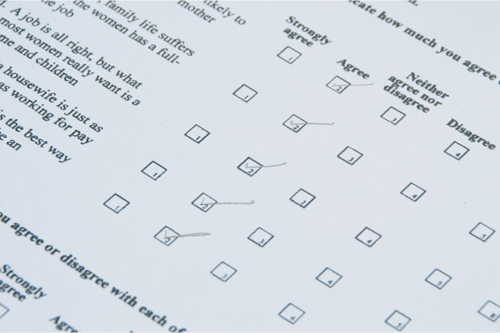
Data-Driven Insights: Measuring Success in Participant Recruitment
Data plays a crucial role in every part of market research—and participant recruitment is no exception.
Of course, gut feeling and experience are valuable, but if you’re relying solely on instinct, you might just miss a few vital clues about what’s working and what isn’t. Let’s say you’ve spoken to a few people and they’re just not feeling like the right fit for the research, it might seem like a one-off. But if this crops up consistently, it could be a sign that your screener needs tweaking or your criteria need reviewing for that market.
That’s where tracking meaningful metrics comes in. Data gives you the evidence to make informed decisions, improve your approach, and ensure your recruitment strategy is hitting the mark.
What Does a ‘Successful’ Recruitment Strategy Look Like?
A successful recruitment strategy isn’t just about finding enough people – it’s about finding the right people. The ones who meet your brief, show up, take part fully, leave feeling positive about the experience – and leave you with the right insight you need for decision making or planning the next steps.
It starts with understanding your goals. What are you hoping to discover? And who do you need to speak to in order to get there? Once you know your audience, it’s about reaching them in the right place—whether that’s through social media, word of mouth, or a market research community.
Next, it's about putting the right tools in place. A clear, well-written screener helps you find people who genuinely fit the criteria. Human validation, such as a phone call adds another layer of reassurance, helping to pick up on articulation, tone and overall suitability. It’s also important to have a skilled team carrying out these checks; at Angelfish, our recruiters are RAS-accredited, meaning they’re trained to follow industry best practices and spot the subtle signs that can make all the difference.
When you combine these elements, you’re far more likely to recruit people who are not only relevant but who also contribute to meaningful, high-quality research.

Key Metrics to Track Recruitment Success
So how do you know your recruitment approach is working? Start by tracking these three simple but effective metrics:
1. Attendance: Turning Sign-ups Into Show-ups
Attendance is one of the clearest signs that your recruitment and communication processes are working well.
A well-timed, thoughtful confirmation process helps keep participants engaged and informed without overwhelming them. We recommend a simple structure: a confirmation email once they’re recruited, a phone call 24–48 hours before the session to go over details, and a final text reminder 1-2 hours ahead. This tends to be the sweet spot but as with everything, it should be adapted to suit the audience, complexity and format of the research.
Other factors to consider:
- Time of day: School children, for example, can’t attend during school hours and may be tired after school. School holidays are often a better option.
- Pre-tasks: Make sure participants are clear on what’s expected of them beforehand, and when it needs to be completed. A nudge or reminder can help here too.
- Incentives: These should always be fair and proportionate to the time and complexity of the research. It’s about value, not volume.
Low attendance can be a strong indication that something in the process isn’t working from communication gaps to incentive misalignment. Keeping track of it helps you spot and fix issues early.
2. Engagement: It’s About More Than Just Turning Up
Getting people in the room (whether physical or virtual) is only the start – they also need to contribute meaningfully.
Setting expectations early really helps. For example, asking someone to complete ten short tasks might feel more time-consuming than two longer ones, even if the overall time is the same. It’s all about framing things clearly from the beginning.
Phone validation can be especially useful here. A quick call allows you to sense how articulate and enthusiastic someone really is, which is valuable in qualitative research where thoughtful, open discussion matters.
You’ll also want to make sure your screener is doing more than just gathering basic information. The best screeners dig into behaviours and attitudes, helping you find people who genuinely match the research criteria. And if you’re not sure how to build one, you don’t have to go it alone many recruitment partners offer this as a service (including us!).
Need help crafting a great screener? Check out these practical tips.
3. Feedback: Learning from the Participant Experience
Don’t forget to check in with participants once the research is complete. Their feedback can be a goldmine of insight.
Did they enjoy the session? Was the task time-consuming? Did the instructions make sense? This information is crucial, not just for improving engagement, but for ensuring data quality.
Let’s say a task was meant to take an hour, but everyone said it took two. By the end, participants might have been tired or rushed, which can impact their responses. These learnings help you adjust future sessions to keep participants more engaged from start to finish.
And of course, happy participants are more likely to refer friends, return for future research (where appropriate), and speak positively about their experience boosting your brand reputation in the process.
Want to avoid the usual pitfalls? Here’s how to sidestep common participant recruitment mistakes.
Using Your Data to Refine Recruitment Methods
It’s one thing to collect metrics but the real value comes from using them to improve. Here are a few tips to get started:
- Gather participant feedback to learn what’s working and what’s not
- Spot trends across different audiences, session times, or formats
- Review your screener and communications to make sure they’re clear and relevant
- Work with recruitment partners who are open about their metrics and keen to improve
Good recruitment should evolve—and data helps you do just that.
Why Angelfish? A Recruitment Partner That Measures Up
At Angelfish, we’re passionate about helping brands, researchers, and agencies connect with high-quality participants who genuinely reflect their research goals. We combine thoughtful recruitment strategies, well-crafted screeners (which we can build for you), fair incentives, and human validation to ensure participants are not just suitable—but switched on, articulate, and ready to contribute.
We believe recruitment is about more than just filling a quota—it’s about finding the right people and making the research experience a great one for everyone involved. Whether you’re new to participant recruitment or simply looking to fine-tune your current approach, we’d love to help you get it right.
Want to make smarter, data-led recruitment decisions? Chat with our friendly team about your next project—we’re here to help.








.png?width=110&height=61&name=MRS%20(2).png)


